Chinese Quarters ~ Main Street, Jacksonville, Oregon
Ever wondered what the Chinese of 1850-1890 have in common with the Britt Amphitheater, Oregon Department of Transportation, City of Jacksonville, Southern Oregon University, Southern Oregon Historical Society, and modern-day residents and tourists?
Many years ago, Chinese migrated from China via San Francisco ports to Table Rock City (Jacksonville), Oregon as the 1851 gold rush mining jobs flourished. Recently, the Southern Oregon University Laboratory of Archeology (SOULA) and a few local SOHS volunteers completed archeological testing within an area of town where the city is planning to construct new sidewalks and other street improvements. Excavation team units were placed along Jacksonville’s Main Street, between Oregon and First Streets, then up the hill toward the Britt Amphitheater to Fir Street. Much of this area was known in the 1800s as “Jacksonville Chinatown” or “Chinese Quarters.”
Prior to the street construction, SOULA staff worked to recover, record, and preserve heritage artifacts from this Chinatown area. The street project is a joint effort commencing in 2012 by SOU, ODOT, the City, and Britt. When finished, the project will provide a necessary storm drain, improved pedestrian safety and mobility with lighting and a paved path, and enhanced area esthetics with plazas at the Britt gateway and beside the Brunner Building. We hope to see visual imagery of the Chinese culture integrated into the 2012 project as pedestrians more safely walk from downtown, through historic Chinatown, to enjoy music and local culture on the Britt hill. This project is completely separate from, but will tie into, other Britt Garden and Jacksonville Woodlands ADA trail projects.
Chinese migrations mainly from Canton Province to the Americas began as early as the 1820s. Most emigrated through the ports of San Francisco, California, bringing with them honor for their homeland customs and traditions and dreams of returning home with earnings to support their families. Very few women migrated from their homelands. There was political unrest at home, and like so many nationalities that migrated around the globe during that time, the Chinese were looking for a better quality of life.
Census data tells us that populations of Chinese rose in Jackson County from the early 1850s to 2,500 Chinese miners working the Upper Jackson Creek by 1864. 1 of every 8 residents was Chinese in the 1870s. Only 329 are recorded in the 1880s, and by 1930 only 5 remained, largely due to repercussions from racist legislation such as the Chinese Exclusion Act of 1882. Many Chinese men lived on mining claims. Others lived in the wooden structures or shanties of Chinatown, keeping to themselves, practicing their beliefs, and enjoying their traditions such as Celebrating Chinese New Year.
We have heard stories over the years of Chinese men doing backbreaking labor in the mining fields of the Jacksonville woodlands area. Tons of earth was moved and water diverted to create high pressure hydraulic mining, washing the earth away from the veins of gold captured in the quartz stone. Remnants of this can still be seen along Jacksonville Woodlands trails named “Chinese Diggins” and the “Petard Ditch Loop.” A new installation is currently underway in an area known as “French Gulch.”
There was much more going on for the Chinese in Jacksonville besides the mining. They owned businesses, had homes along Main Street, and worked doing laundry, cooking, and housekeeping. Much of the population decline occurred after the gold rush had been played out and the Federal 1882 Exclusion Act was implemented. The protectionist policy made it increasingly difficult to support oneself here, driving Chinese and other immigrants away in large numbers. By the 1880s, the railroad industry was building rail connections between Portland and San Francisco. They needed hard-working laborers. The big cities like San Francisco were also flourishing and needed skilled employees for hotels, restaurants, and other industries. Of those Chinese who remained in Jacksonville from 1880-1930, they mostly worked in hotels and private homes with names such as Britt, Hanley and Beekman. Often, the remains of those who died here were collected and returned to Chinese soil by relatives.
Several Chinese men lived on or near the Peter Britt estate, perhaps tending his gardens and orchards. He is said to have been their employer and banker, helping with finances. There are also several Chinese signatures in the Beekman Bank registers.
Eni Yan(g) is named on the 1870-1900 census with the Beekman family as “Eni Yan(g), Cook, Chinese male, born January 1849, age 51 years, married for 21 years, born in China.” Yan had migrated from China with his parents in 1862. Being skilled at speaking, reading, and writing English, Yan’s employment with the Beekman family was know to be far greater than, “cook.” In letters between Beekman family members and their neighbors during travels and long absences away from their Jacksonville home, one finds frequent mentions of “Yan,” used in a context suggesting he was a close friend or family member. One letter from the SOHS collection reads, “Yan was delighted to see us. He had a bright fire in the sitting room, and a nice supper prepared for us…Yan asks about you every few days. Sometimes he gets a little lonesome but always seems in a good humor.” Yan is not listed in the 1910 census. Still today, the worn depression in the dining room carpet can be seen where Yan stood beside Mr. Cornelius Beckman’s place at the head of the table. Memories through these artifacts and recorded stories keep history alive and bring a presence to names in our heritage.
An excavation nearer California Street in March 2004 was funded by a grant through University of Oregon prior to the completion of Hwy 238 refurbishing. This area is all referred to from an archeological standpoint as “Jacksonville Chinese Quarter,” which can be seen highlighted on the 1884 Sanborn fire insurance map of Jacksonville. As was the case in the more recent November 2011 dig, traditional assemblages were found that (photo10-13) archeologists recognize as coming from overseas Chinese populations. We unearthed blue on white porcelain and celadon bowls and cups, stoneware storage and alcohol jars, (photo5-9) medicinal opium paraphernalia, gaming pieces, a lot of food remains, laundry bluing, pieces of hanger wire, buttons, and a coin. All of these materials can comfortably be placed in a date range of 1850-1880s, which matches the documentation on the area from SOULA and SOU. The public is invited to view pieces on display in February at the Hannon Library, on the Ashland Southern Oregon University Campus.
The 2011 Dig Team
During this 2011 archeological excavation, our team worked together through adverse weather and environmental conditions, not unlike the sun or snow, dust and mud endured by past Chinese workers. Although projects have a common goal, varied interests and personalities come into play. Working with a team was truly inspiring.
As she sifted excavated dirt in hopes of finding cultural artifacts, SOHS volunteer, lifetime resident, and registered nurse Gayle Lewis said, “I don’t mind all this dirt, because this doesn’t hurt anyone like nursing sometimes does.”
Aaron Alkire, SOU graduate, plays in a Blue Grass band that opened on the upper stage for Willie Nelson’s 2011 Britt concert. Interestingly, during the dig, he located a piece of broken bottle glass in the shape of a heart.
Matt Macfarlane, SOU graduate from the Klamath Falls area, majored in Anthropology and Native Studies and hoped to locate Native artifacts from pre-1850 supporting the pioneer artifacts.
Chelsea Rose, Jacksonville resident and SOULA Archeologist extraordinaire, coordinated SOULS’s role in the field, the lab, with the government entities, while finding bits of time to bake cupcakes and pick garden-grown fruit for her team mates. Chelsea received her education in Sonoma, California and at the University of Oregon. She also joins a team of archeologists in Scotland yearly, searching for medieval artifacts, and thus supports a great span of historical knowledge.
As for me, a SOHS resident volunteer, a 6th generation descendant of pioneers migrated from Scotland, Prussia, and Ireland who arrived in Table Rock City area between 1952-1859. My youth was rich with generations of story-telling family and photographers on a Kerby, OR ranch. My education was in San Francisco and Sonoma, CA, majoring in Behavioral Science then Conceptual Art. My greatest college adventure was working on an archeological dig on the windy coastal banks behind Ft Ross when El Nino exposed bones sticking out of the earth. We determined the date a trade road was built which had encapsulated that Native Alaskan dump site, near where they camped and hunted sea animals for pelt traders of the Russian/American Navy. I knew then that the secrets of history were not just what authors wrote in books. Personal heritage, thrill of discovery, and the desire to promote respect for all humans pulls me like a magnet to these projects. **
Be sure to take part in the Chinese New Year Celebrations on February 4 in Jacksonville, Click here for the schedule of events!
Article Resources:
Chelsea Rose, SOULA
SOHS research & Heritage magazines:
Spring 2006, pg 6,7 (Emperors Dragon Robe)
May 2003, (Beekmans) magazine and heritage binder.
Summer 2004, pg 16, 17 (Archeology March 2004 & Chinese New Year)
Spring 2009, pg 19 (Chinese)
The Jacksonville Story, R.H.Engman
Images of America, Jacksonville, M LaPlante & SOHS
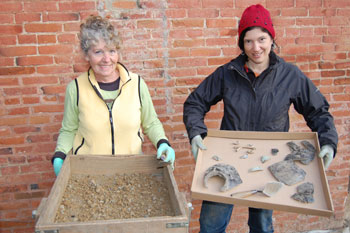
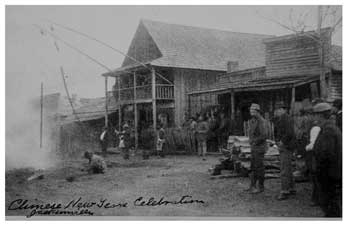
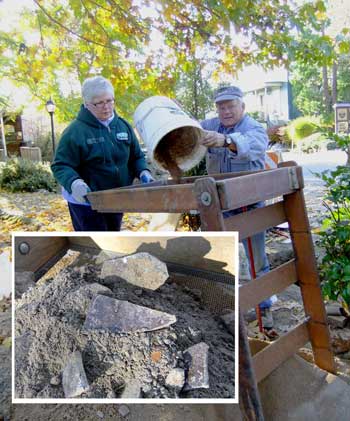
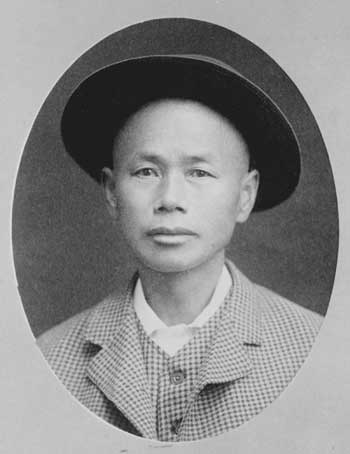
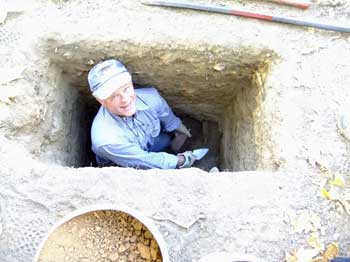


Really enjoyed reading this article about Chinese history in 19th. century Jacksonville– and the 21st. century efforts to re-discover that history. Many thanks to the volunteers that dedicated time and energy to recovering artifacts.
Your historical photos are great – do you own them? What are the usage rights of these, specifically the Jacksonville Chinatown and the cook.
Thank you.
Anastasia
The Jacksonville Review accesses many of its historically-specific photos related to content from photo archives owned by the Southern Oregon Historical Society under a specific use agreement.